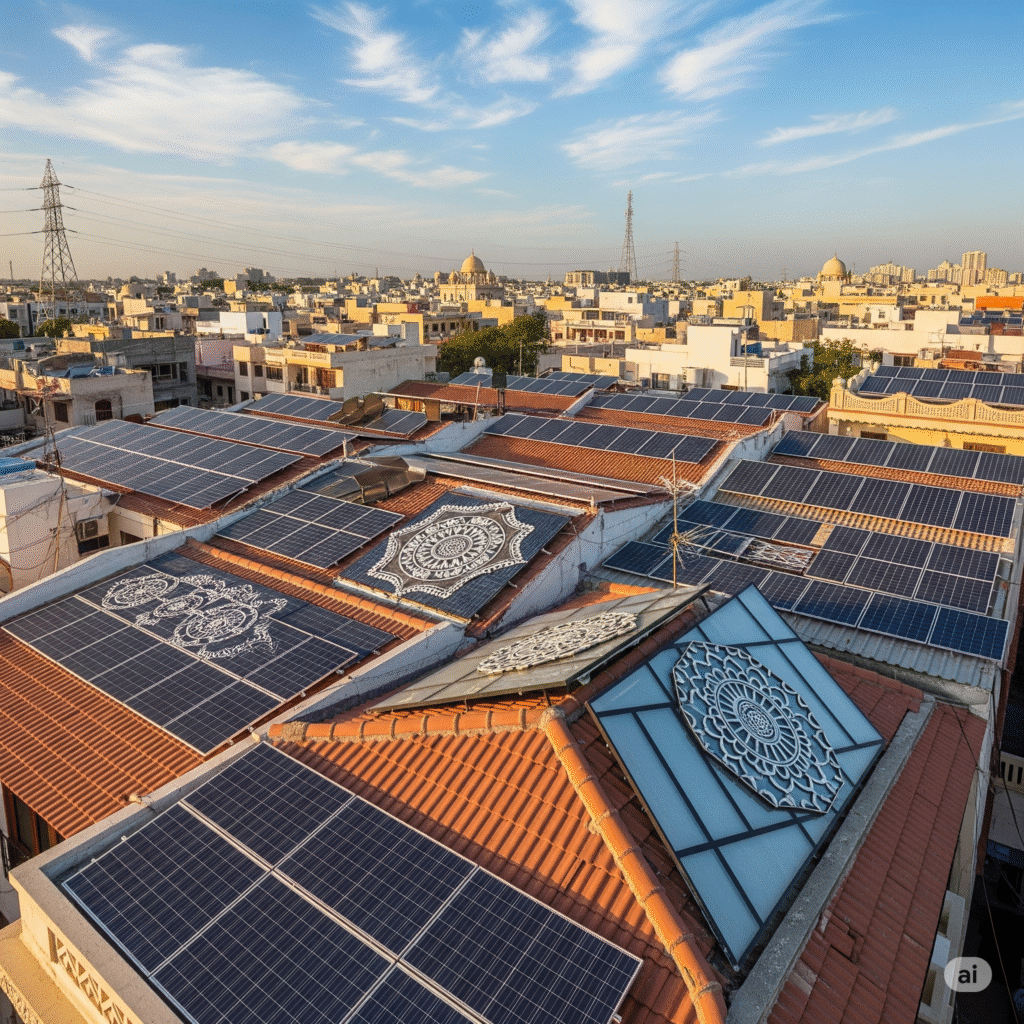PM Surya Ghar Muft Bijli Yojana: Latest Updates & Rooftop Solar Guidelines
The Government of India has recently released a corrigendum to its PM Surya Ghar Muft Bijli Yojana (PMSG: MBY) guidelines—a flagship rooftop solar program aimed at providing up to 300 free electricity units per month to eligible households. Issued by the Ministry of New and Renewable Energy (MNRE) on 28th July 2025, this clarification is crucial for homeowners, solar installers, and developers.
This update emphasizes rooftop solar adoption and ensures the scheme remains focused on household energy independence.
Key Changes in PM Surya Ghar Muft Bijli Yojana 2025
- Capex Model (Self-Investment by Consumers)
- Ground-mounted elevated solar systems are still permitted if they follow MNRE technical guidelines.
- Suitable for parking sheds, terraces, or unused areas.
- Allows flexibility for households with limited rooftop space.
- RESCO / Utility-Led Model (Third-Party Investment)
- Only rooftop solar systems are allowed.
- Ground-mounted or community-based installations require explicit MNRE approval.
- Ensures the focus stays on household-level solar adoption rather than large-scale commercial projects.
- Virtual Net Metering (VNM)
- Systems must be installed strictly on rooftops, not open land or elevated ground structures.
Why This Update Matters
The corrigendum strengthens the household-centric mission of the scheme:
- Ensures subsidies reach families, not commercial players.
- Promotes optimal rooftop usage for energy generation.
- Supports India’s decentralized renewable energy goals.
- Reduces potential land-use conflicts from large ground-mounted projects.
Benefits of PM Surya Ghar Muft Bijli Yojana
- Energy Security for Households
Eligible families receive up to 300 free electricity units per month, lowering monthly energy expenses.
- Promoting Decarbonization
By installing rooftop solar, families contribute to reducing fossil fuel dependence, supporting India’s Nationally Determined Contributions (NDCs) under the Paris Agreement.
- Driving Decentralized Energy
Rooftop solar reduces transmission losses, eases grid pressure, and strengthens local energy reliability.
- Boosting Green Jobs
The scheme supports:
- Solar panel manufacturers
- EPC contractors
- Electricians and installation technicians
- AI-based energy monitoring providers
- Empowering Households
Families become prosumers—both producers and consumers of electricity—promoting energy independence.
Implications for Stakeholders
Homeowners (Capex Model):
- Flexibility to use elevated structures over parking or terraces.
RESCO / Utility Developers:
- Rooftop-only installations are now mandatory.
Community & Virtual Net Metering Projects:
- Must remain rooftop-based; open plots or shared land projects are ineligible.
Tips for Maximizing Benefits
- Choose the right rooftop location to maximize solar exposure.
- Hire MNRE-approved installers for quality assurance.
- Monitor electricity generation using smart apps or meters.
- Leverage government incentives and subsidies fully.
Conclusion
The PM Surya Ghar Muft Bijli Yojana continues to be a transformative rooftop solar program in India. With the latest update:
- The scheme is strictly for households, rooftops, and families.
- Financial benefits, environmental gains, and social empowerment are directly accessible to citizens.
By following MNRE guidelines, stakeholders can be part of India’s decentralized energy revolution.
For official MNRE guidelines and detailed notifications, click here.

Leave a Reply